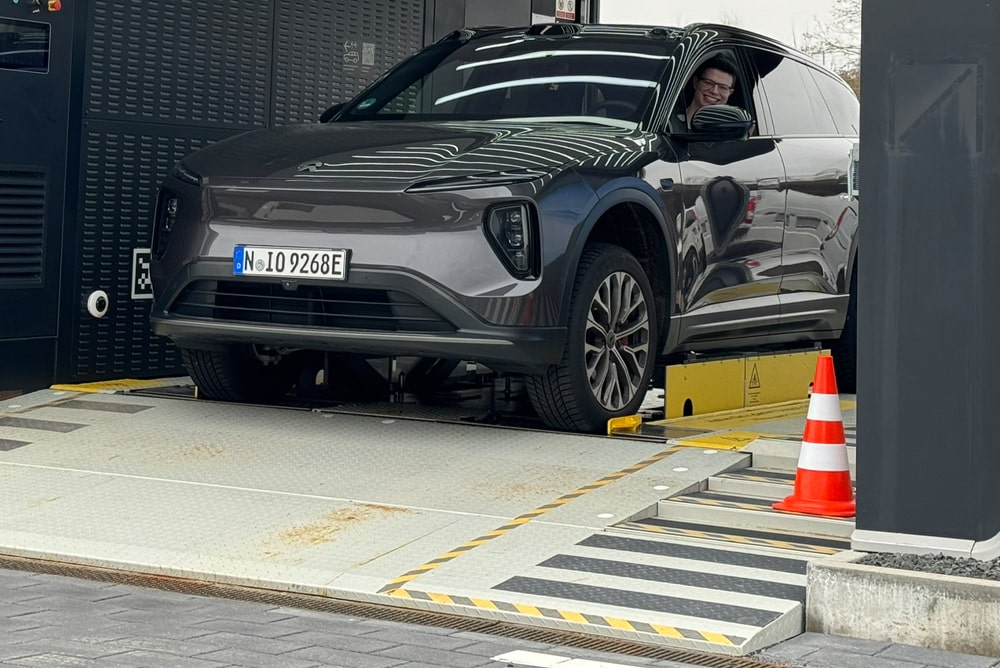
Nio is growing up: Testing the Nio EL6
A word on the name – the change from “S” to “L” was due to a legal dispute with Audi. Still, the dimensions remain nearly the same; only the third decimal place has changed in the length of 4.85 metres, the width has grown by three centimetres (now 1.99 metres without mirrors), and it has lost just as much in height, which remains at an impressive 1.70 metres.
The shape and proportions are correspondingly similar. The most noticeable change is the sharpened lighting design, particularly in the rear lights and the LiDAR sensors sitting high on the roof. In addition, the tailgate has moved from the front left to the rear left, and the wheel arches are not as angular anymore.
Much thought has gone into the inside
Inside, too, little has changed at first glance as the tidy, no-frills look continues to dominate. However, a closer look reveals a host of improvements and significant progress, particularly in quality. It starts with excellent workmanship, continues with a good choice of materials and ends with attention to detail, which is noticeable in every corner of the vehicle. No matter where you touch, press or tap the surfaces – nothing rattles!
Clever features
Attention to detail materialises in many places. There is the front footrest that transforms the passenger seat into a comfortable, almost flat bed, for instance. The additional display in the rear allows passengers sitting in the back to control many functions. The backseats also electrically recline at a ratio of 60:40 and still fold down mechanically for more storage space. The key card, familiar from Tesla, doubles as a charging card in the Nio and is well thought out. The doors spring open as soon as you touch the extended handles without having to pull them.
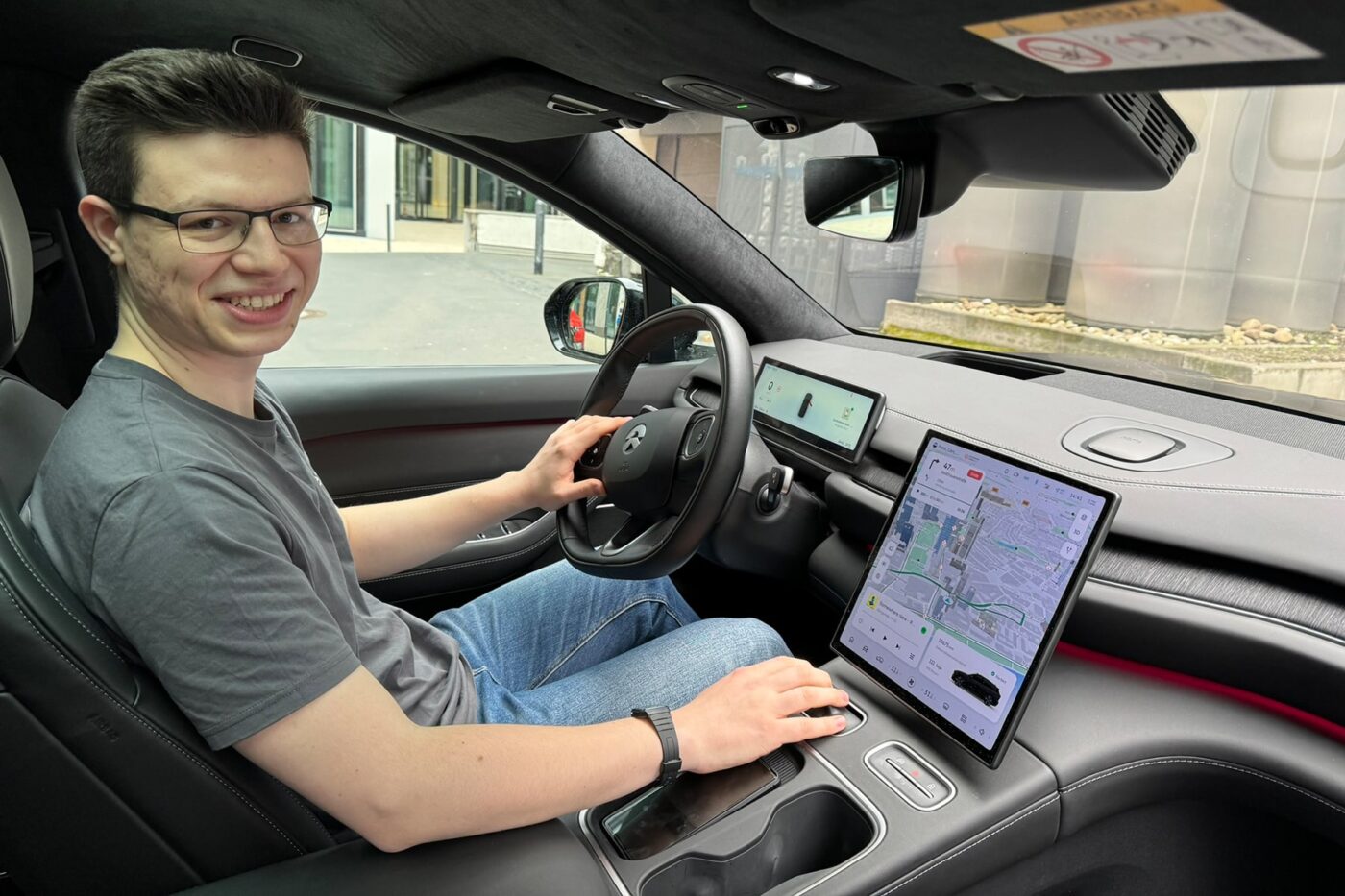
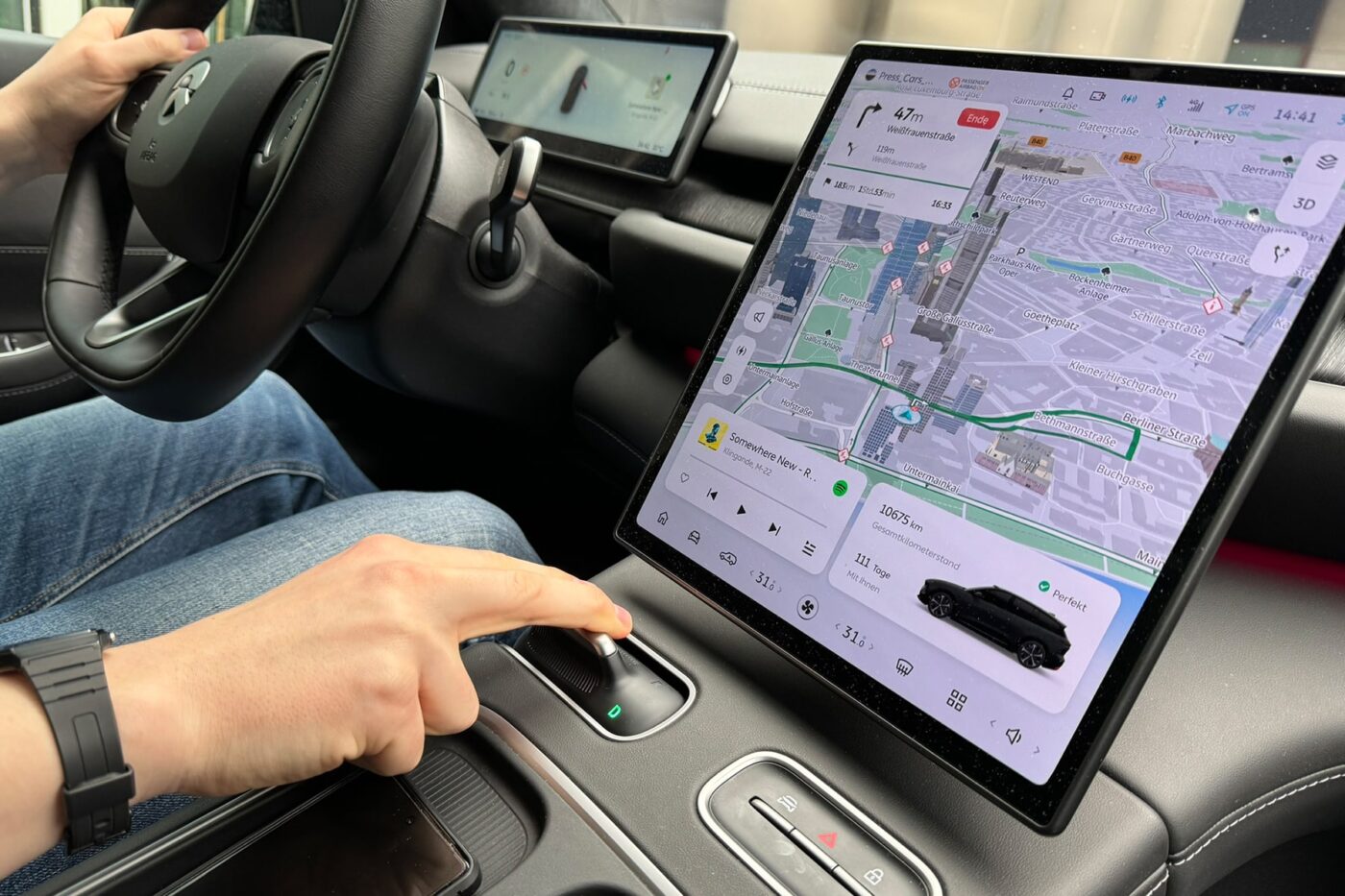
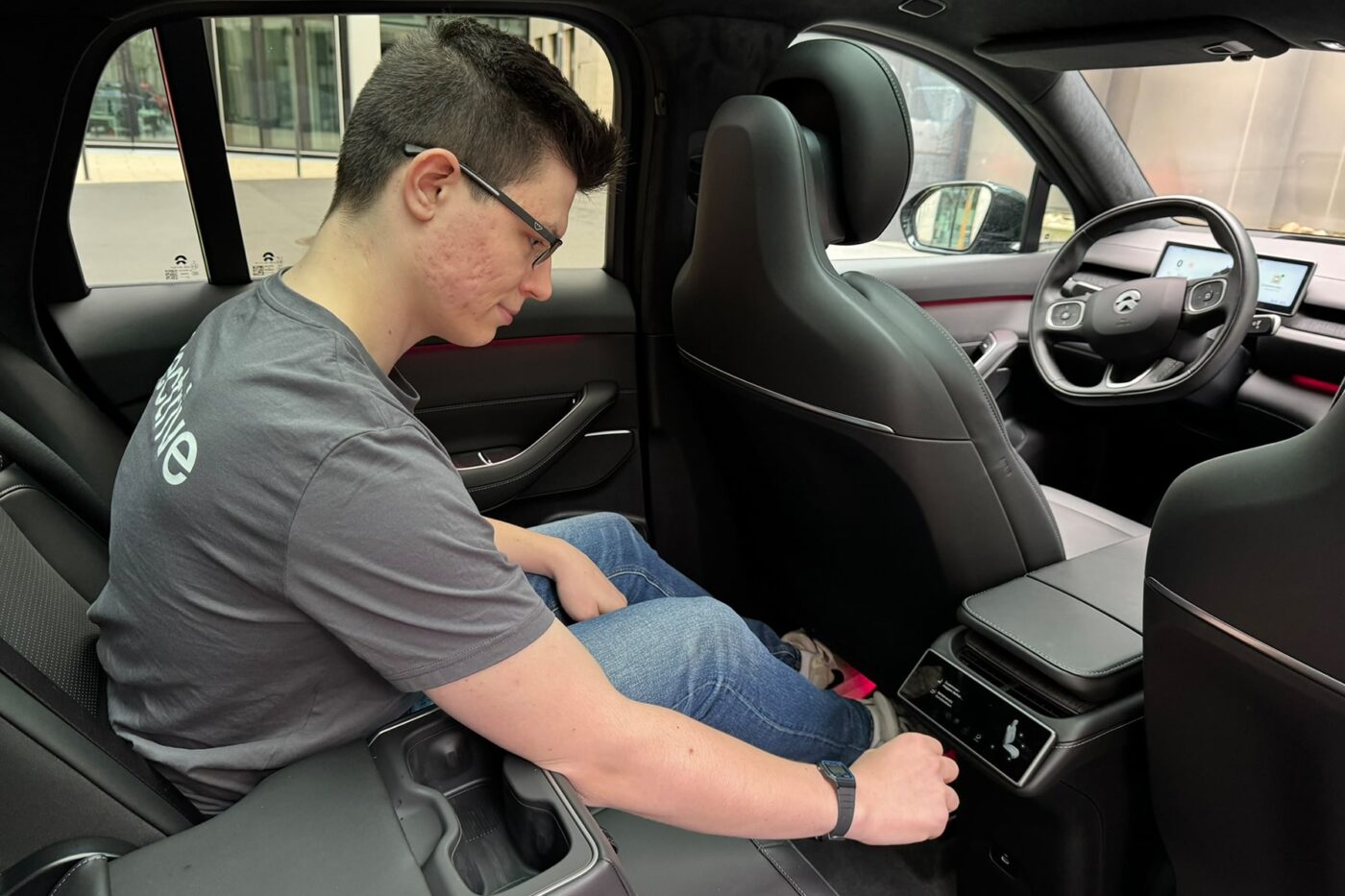

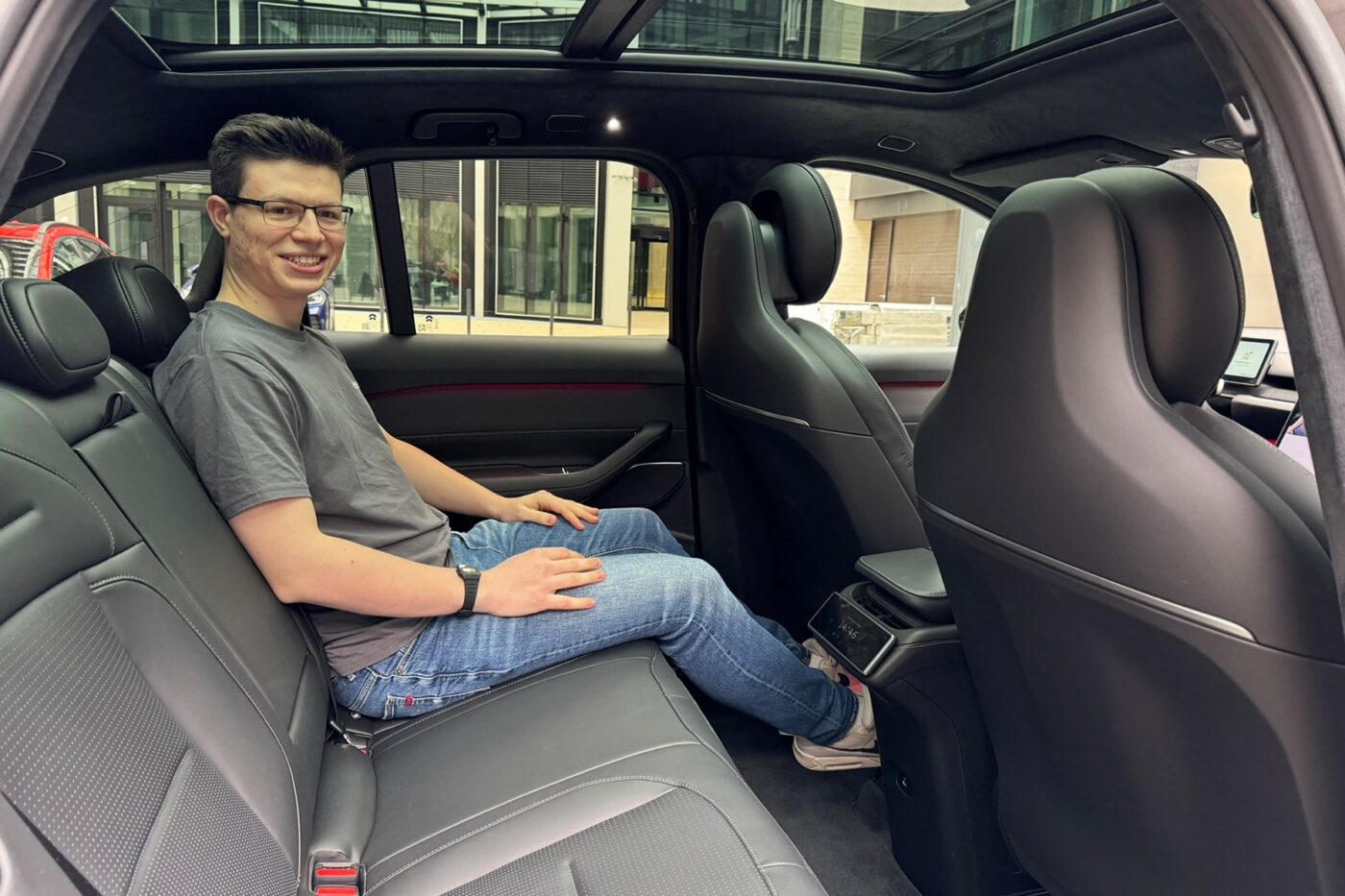
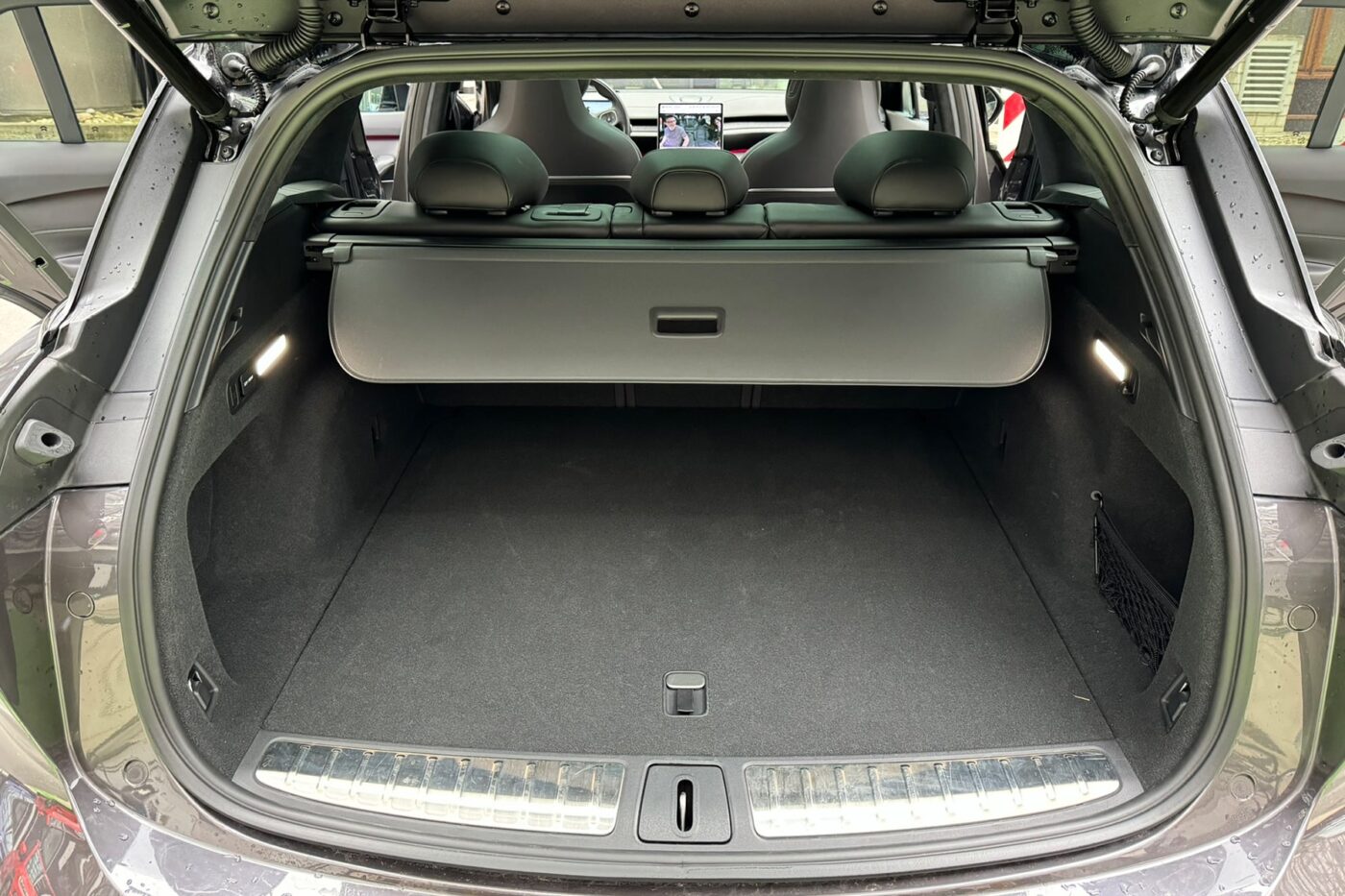
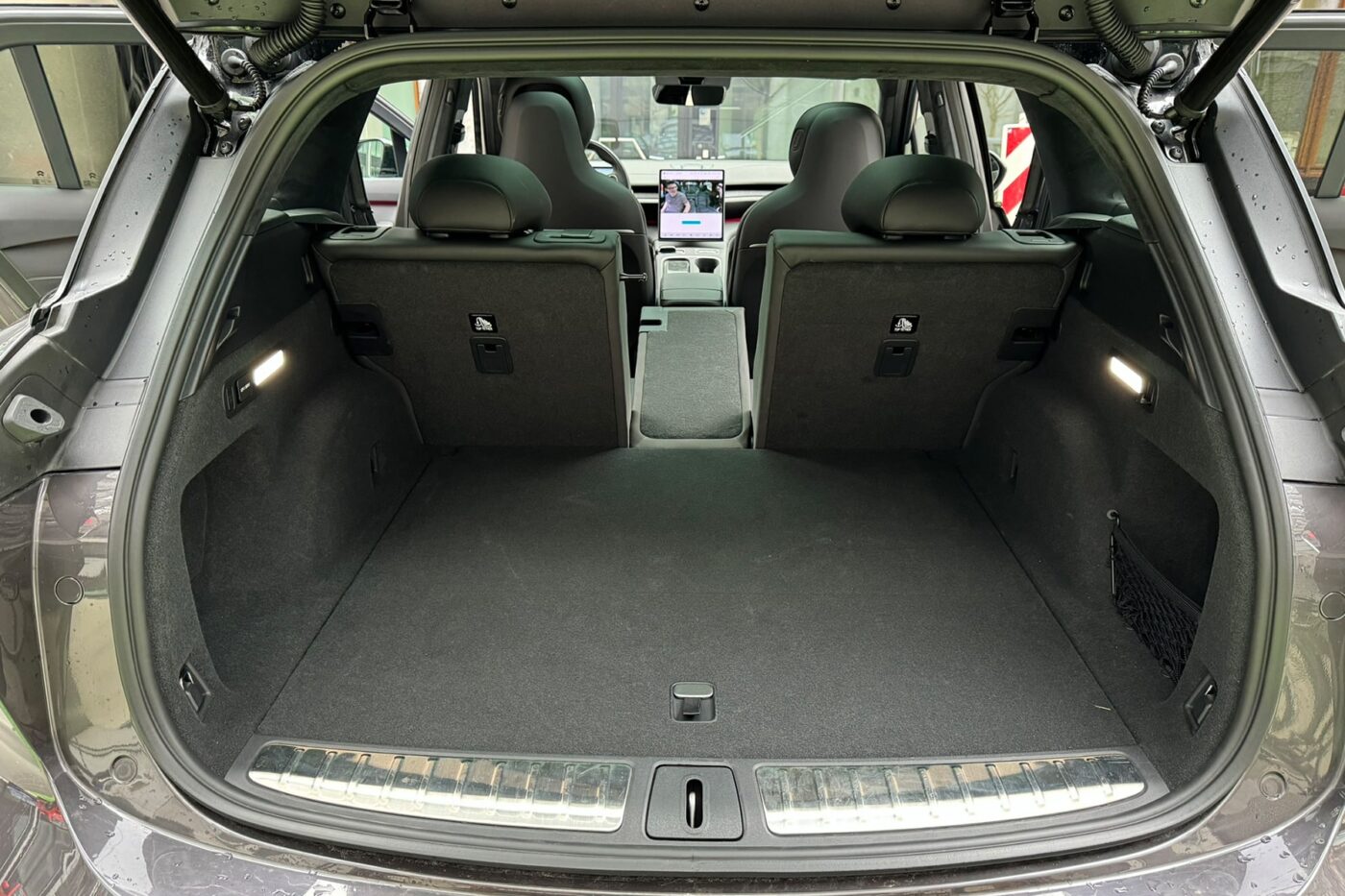
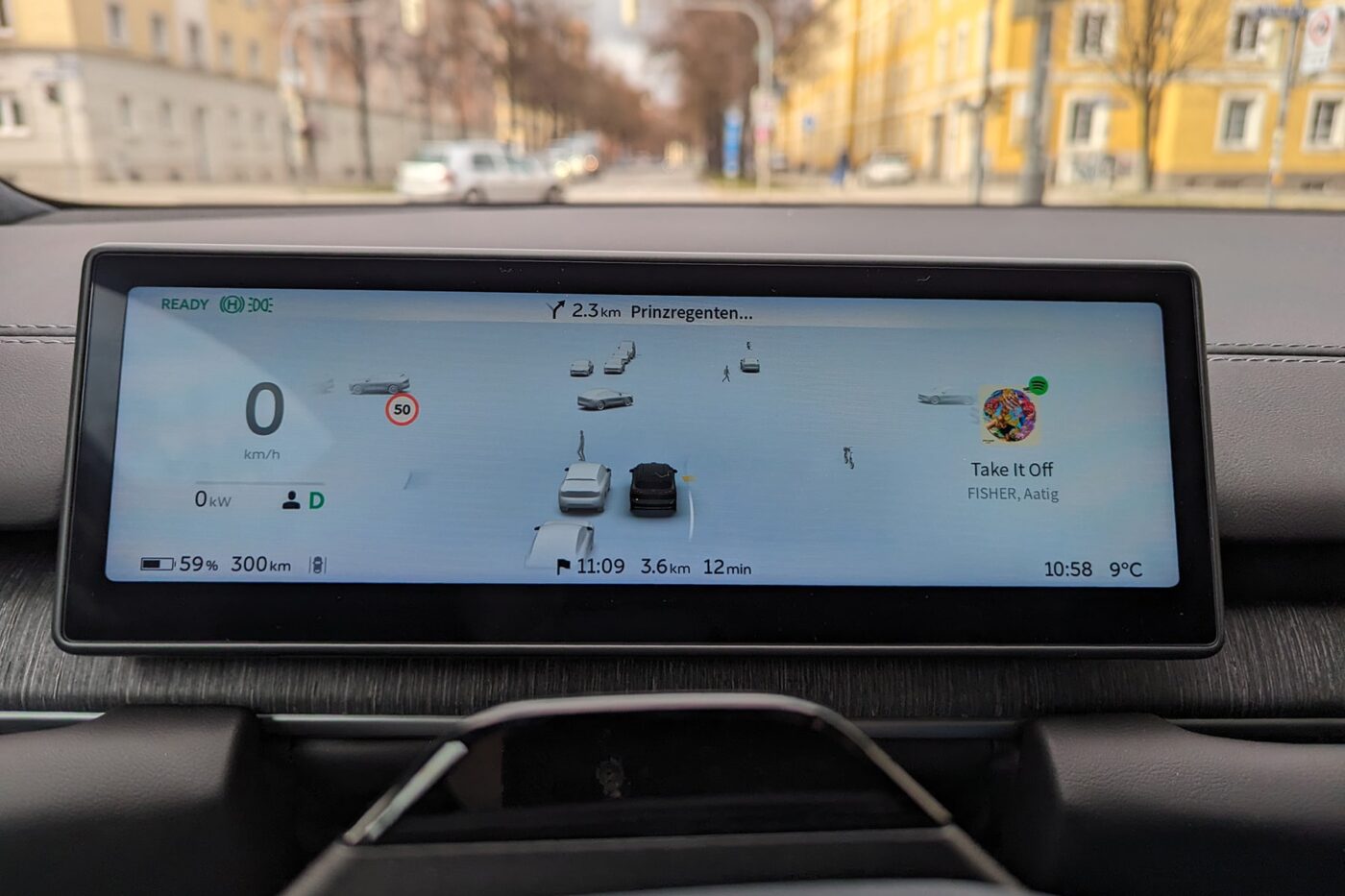
The automatic soft-close system pulls the doors into the lock even if you don’t close them altogether, the car is impressively quiet even at high speeds, and the seats with heating, cooling and massage invite you never to get out again. The steering wheel is also touch-sensitive and recognises that the driver still pays attention even without strong steering movements. Only the driver and front passenger are kneaded as standard, but the wellness programme is available on all seats for an extra charge.
Software: Where is Nomi?
Speaking of surcharges, if you got used to the cuddly ball with the cute eyes and funny dance moves of Nomi, the voice assistant from previous versions, you must explicitly select it in the configurator and pay a surcharge of €750. Instead of the face, there is now only a plastic cover in the dashboard in the style of an Amazon Alexa, whose light ring flashes and flickers during an interaction. The assistant works as usual: it understands almost all commands, can plan routes, change settings and switch headlights on or off. However, Nomi still lacks two abilities: it cannot search for a song in music streaming by voice and has difficulty with colloquial language; you really have to use the exact words that the programmers have provided.
The software progress generally pleases: The sat nav has become really usable, even basic features of a charge planner are now available (the SoC forecast remains a bit bumpy, though), many menus have been better structured, and the translation errors occur less. We also tested the smartphone app for the first time, which is easy to connect and has all the essential features (door control, localisation, preconditioning of the interior and battery, and more). There is room for improvement in rare cases, such as recording consumption data, which only ever counts the last 100 kilometres. Still, the bottom line is that Nio’s current infotainment system is better than some of its competitors.
Consumption: As impressive as the car
We weren’t expecting a consumption wonder because, with a height of 1.70 metres, all-wheel drive, 360 kW system power and 700 Nm torque, the car isn’t exactly trimmed for efficiency.
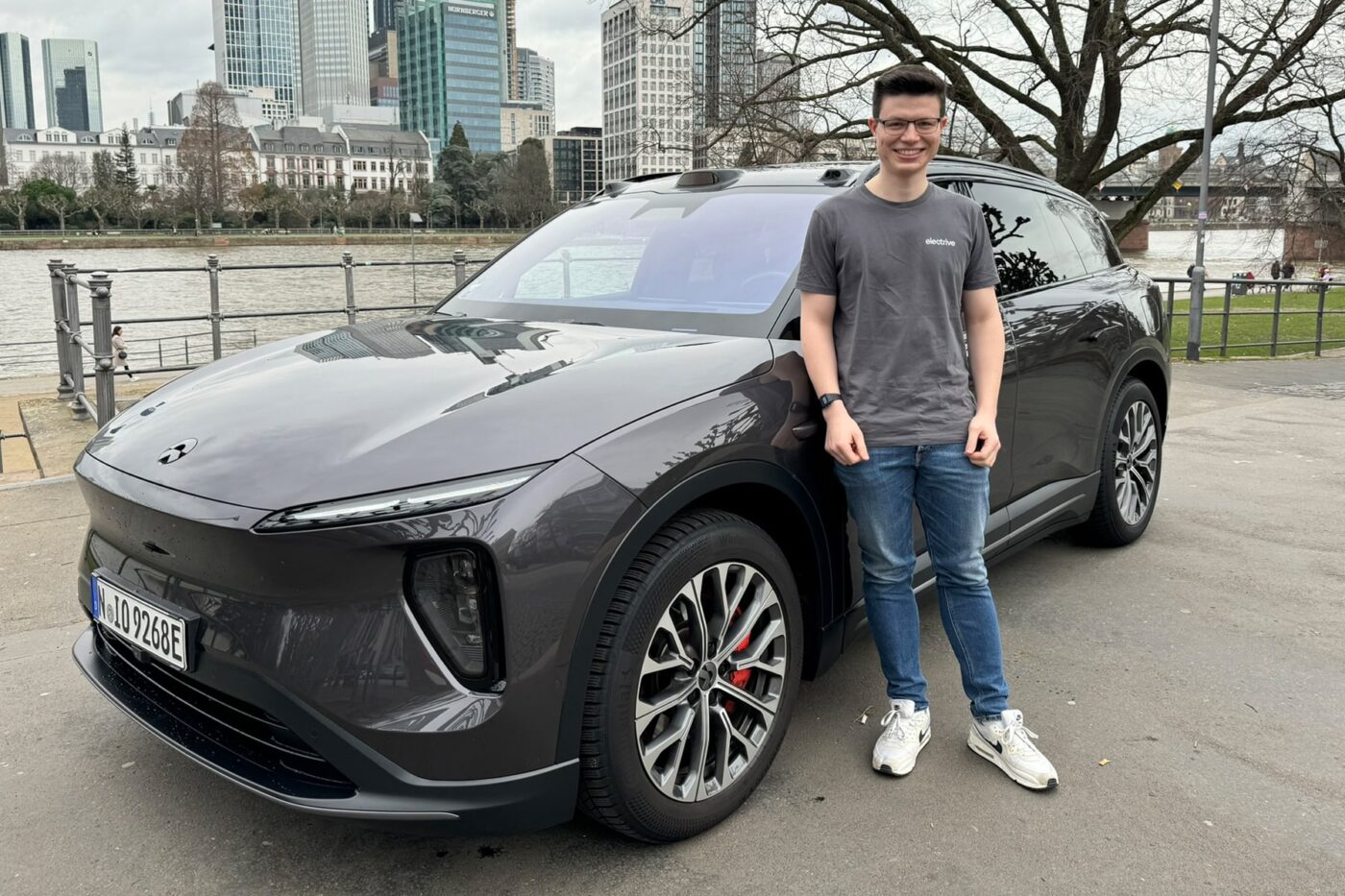
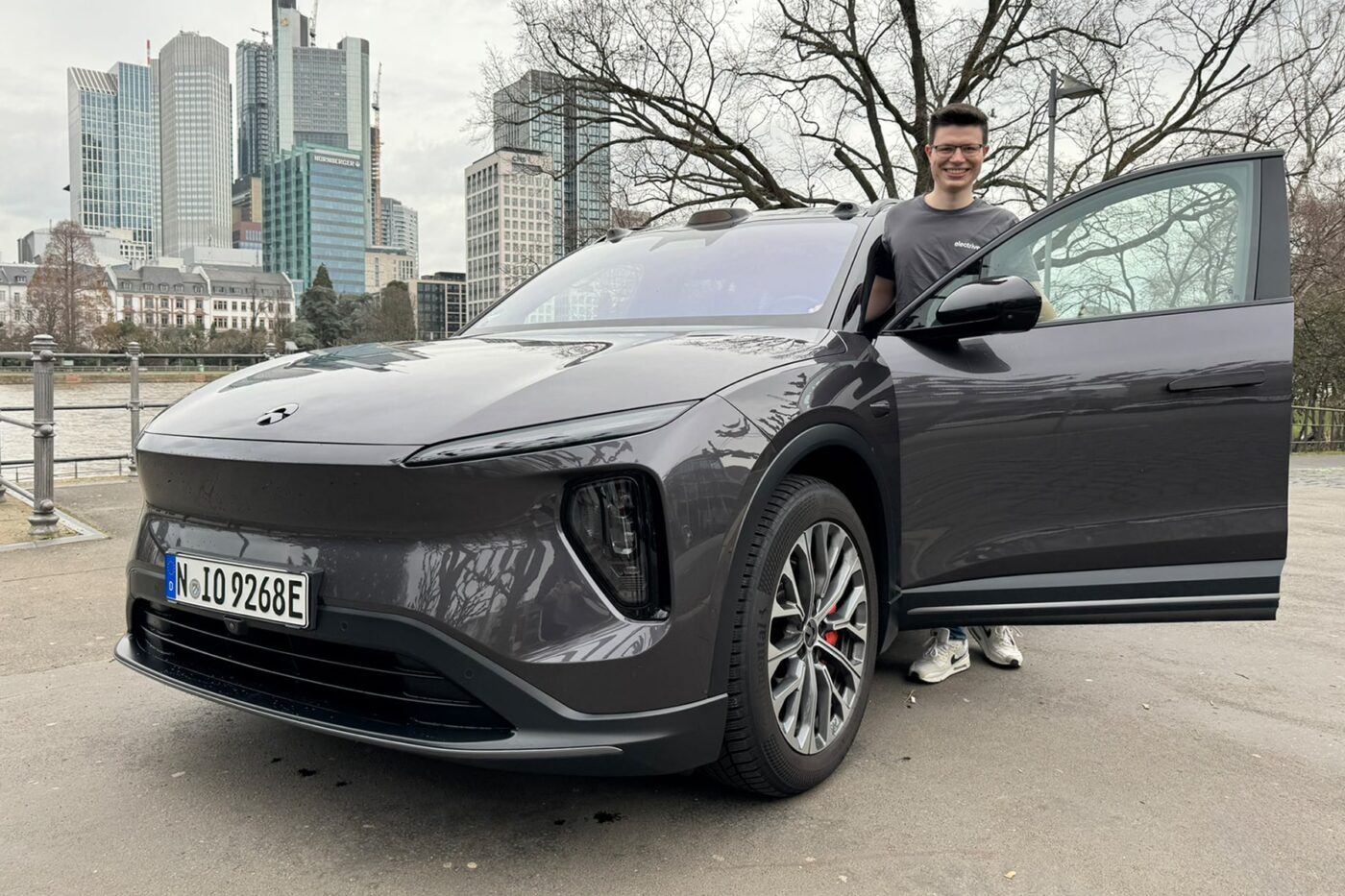
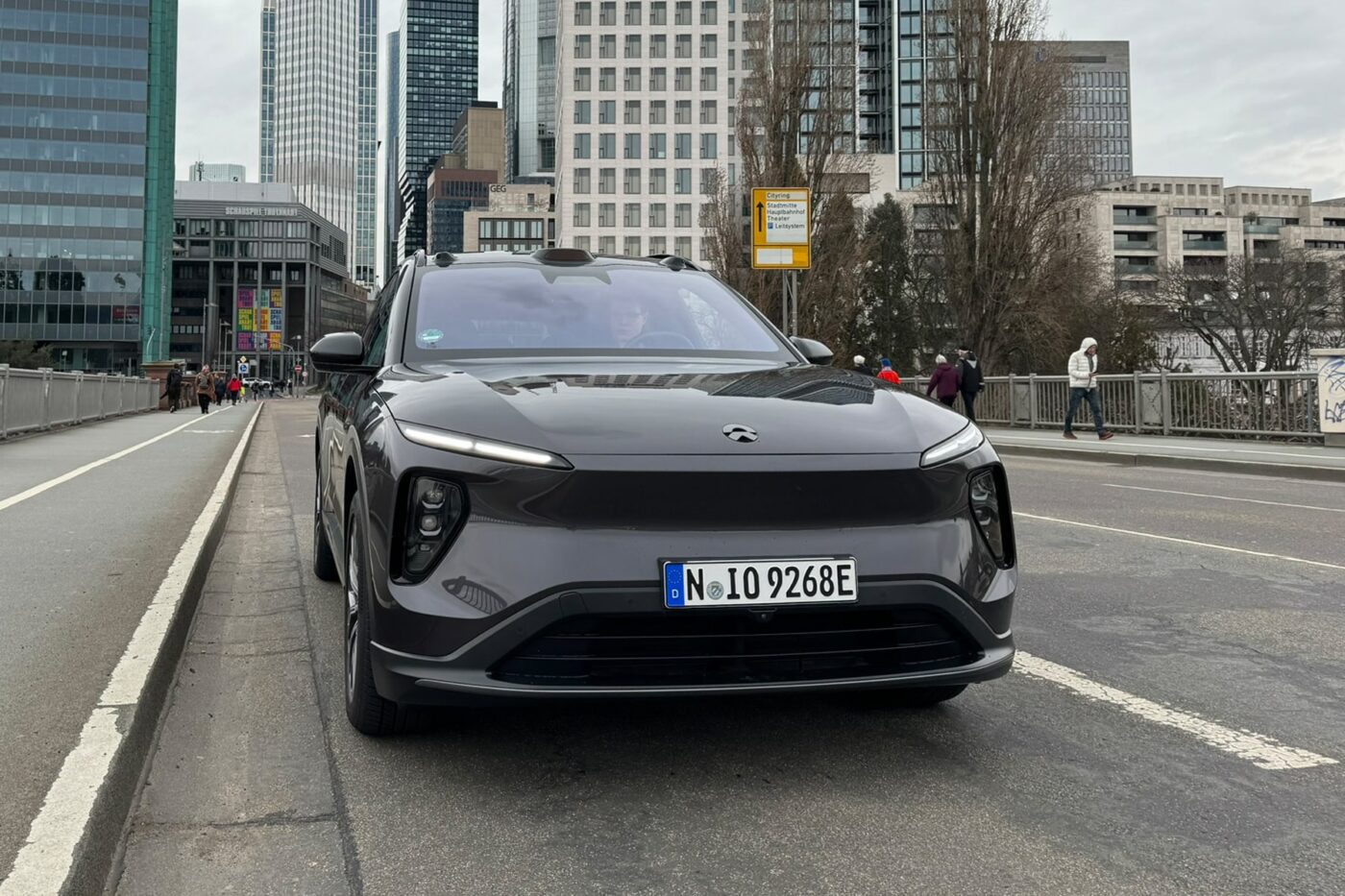
Nevertheless, we were surprised by what we saw on the electricity meter during the motorway tests. Depending on the weather conditions (the lowest temperature in the test was just below zero, the highest at 15 °C), the clock showed a minimum of 24.8 kWh and a maximum of 29.5 kWh per 100 kilometres at a constant speed of 130 kph. That is too much, even for a large and heavy car. The large battery (100 kWh gross, around 90 kWh net) corresponds to a practical range of just over 300 kilometres with a typical driving style on the (German) motorway – that’s not enough.
Focus on comfort
On the other hand, it performs well in the city, where we can drive the car well below 20 kWh/100 km, which is fine. Nevertheless, the motors are too energy-intensive for a vehicle clearly targeted at long journeys in terms of dimensions, comfort and features.
Of course, we also drove real fast – but only briefly, as consumption explodes so much at the 200 kph limit that you can watch the battery indicator drop. But this is neither surprising nor problematic: nobody outside Germany drives that fast on public roads.
The fact that the EL6 is rather unsuitable for full-power driving is also evident from the relatively soft suspension and synthetic steering, which prioritise comfort over sportiness, which is undoubtedly a positive thing for cosy driving. The princely amount of space in the rear also fits in with this, with which Nio once again makes it clear that its customers are more likely to sit in the right rear of the car (behind a private driver) than in the driver’s seat.
Fast charging and an unrivalled battery swap
On the other hand, the charging performance is fast and has been significantly improved. The maximum charging power is 185 kW, and the EL6 charges from 3 to 80 % in 26 minutes. The battery can be preconditioned either automatically, based on the route planning, or manually at the touch of a button.
As with other Nio cars, battery swapping is also really easy: park the car in the marked space in front of the swapping station, and the rest will be taken care of. Autonomous parking in the swapping station, lifting the vehicle, taking the empty battery out and taking a full one in, lowering the lifting platform again and driving out – done. The process takes four minutes and 18 seconds and is unrivalled in speed compared to conventional charging. However, there are currently only eleven battery exchange stations in Germany, each of which usually has a single-digit number of batteries in stock, which is insufficient for mass rollout. However, there are plans to expand to 40 stations, which may work if they hold enough batteries. However, the biggest obstacle to changing batteries is the restrictive opening hours; the swapping stations close between 5 and 7 p.m., even at weekends. As a result, we could swap much less often than we had planned.
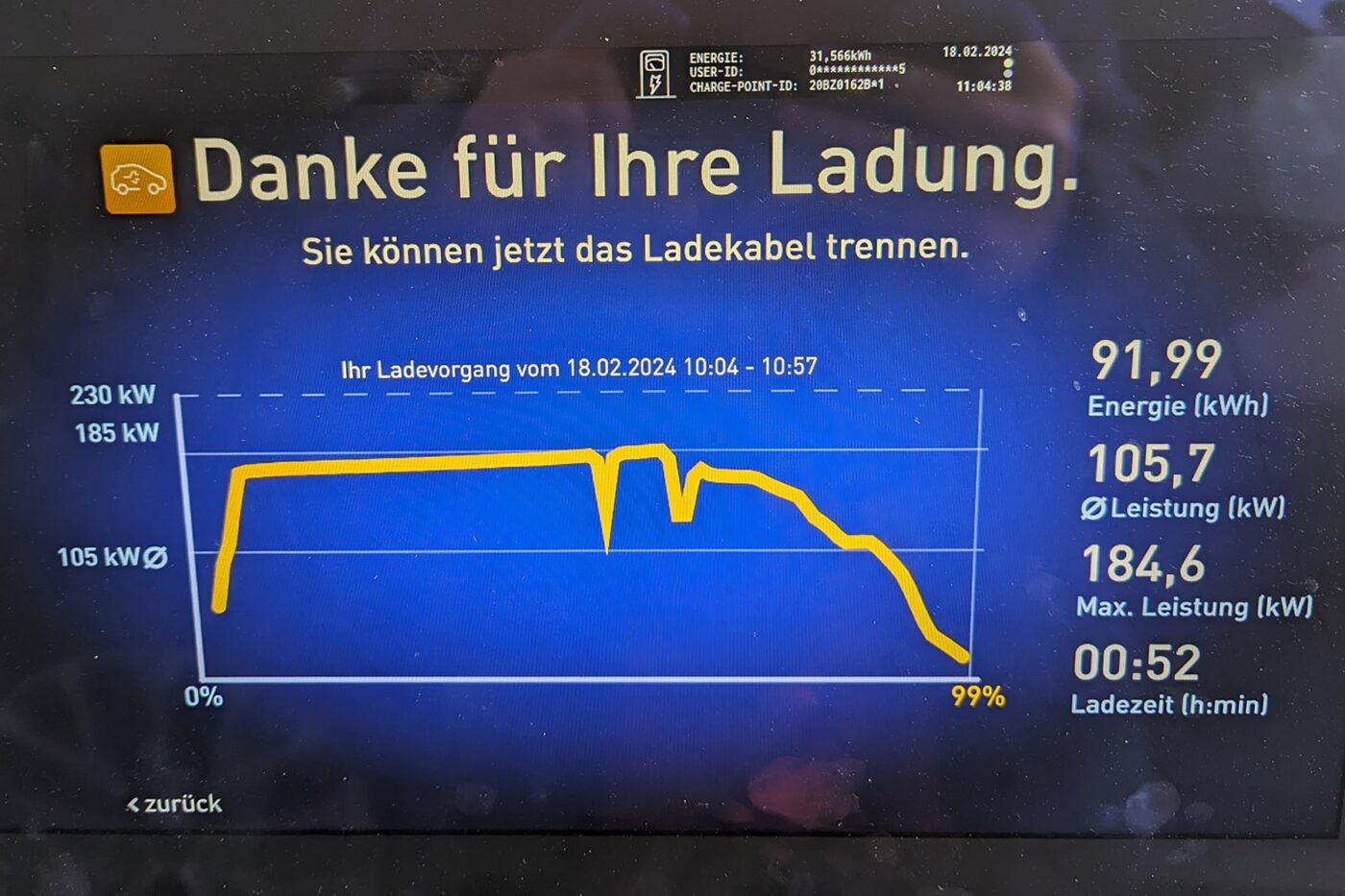
However, Nio has since changed the opening hours. Since the beginning of April, all swapping stations are open from 7 a.m. to 10 p.m., which makes the offer much more practical.
We also found the power lottery quite annoying. Since Nio has two versions of its Long Range batteries (180 kW and 125 kW charging power), you can’t know which one you get in a swap; this also means you won’t know whether the following charging process can be achieved in the best time, as in our case, or whether it will take significantly longer.
Charge or swap?
Still, the battery swap is technically excellent. It’s fast, convenient, and straightforward. However, room for improvement remains in the concept because changing the battery makes the most sense at night when you want to get home quickly and don’t feel like taking a break to charge. And if you don’t run the risk of changing to a poorer battery with less charging power.
So, from a practical point of view, conventional charging is (still) the more sensible option, but swapping is quite attractive in terms of price, as it requires battery hire. This reduces the purchase price of the Long Range version from €74,500 to €53,500 incl. VAT, with a monthly battery hire charge of €289 on top. This means buying the battery is only financially more attractive from the sixth year onwards. The “Battery as a Service” model is worthwhile for anyone who wants to keep the car for a shorter time. The hire includes two swaps per month, with a €10 service fee payable from the third. The electricity purchased is charged at 39 cents per kWh at any German station, a very fair price that is well below many DC electricity tariffs and, in some places, is even close to domestic electricity prices.
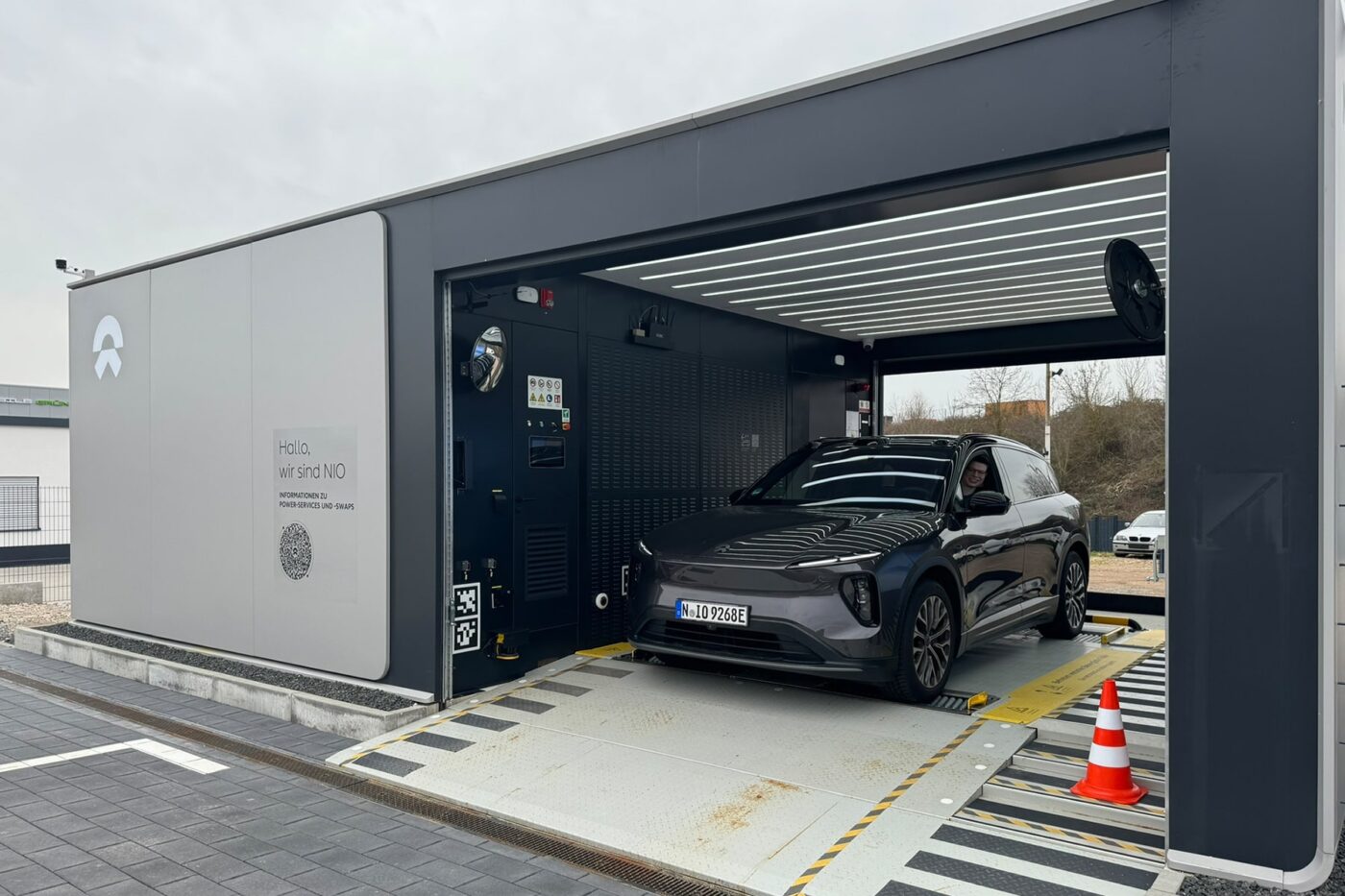
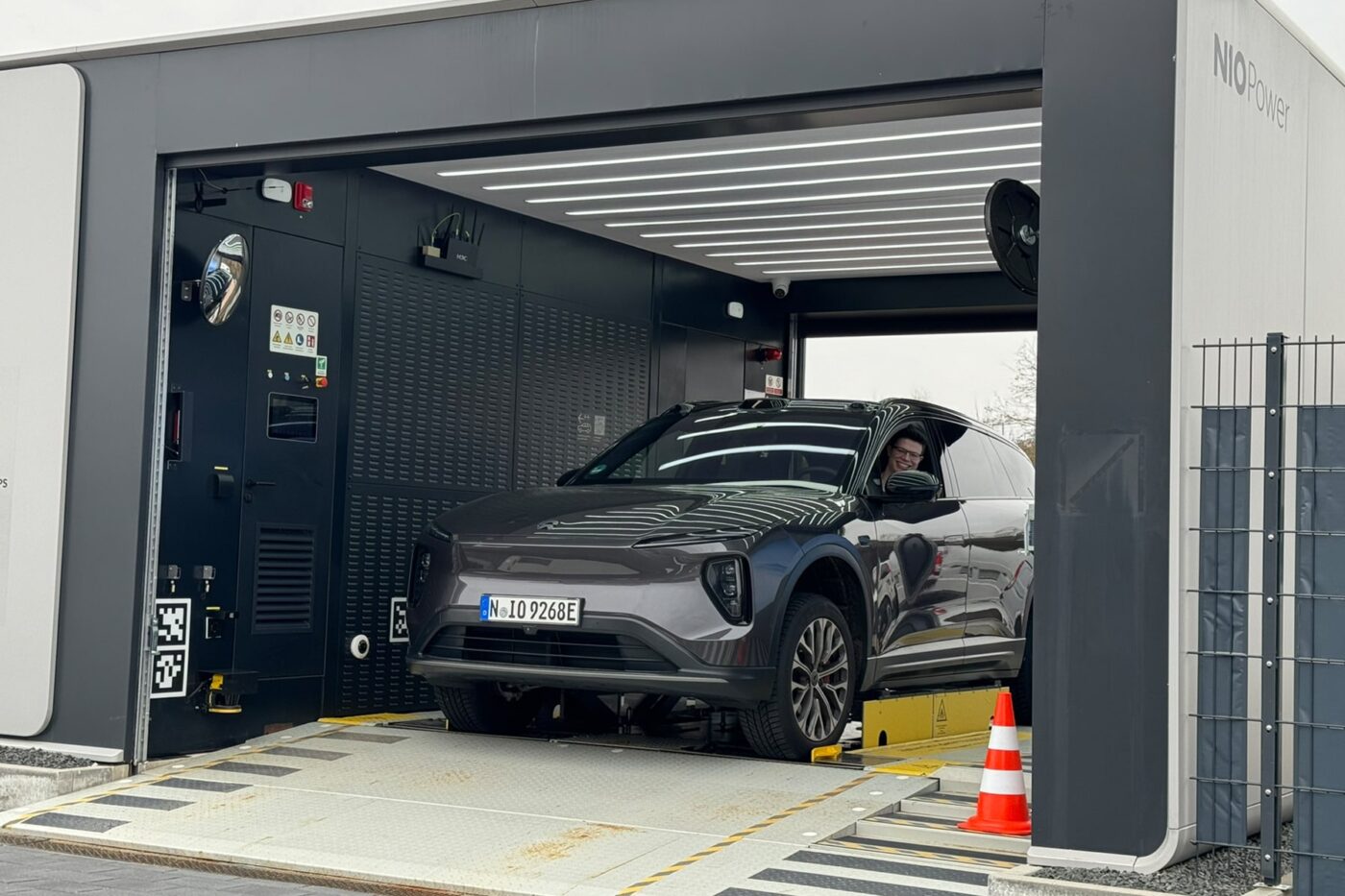
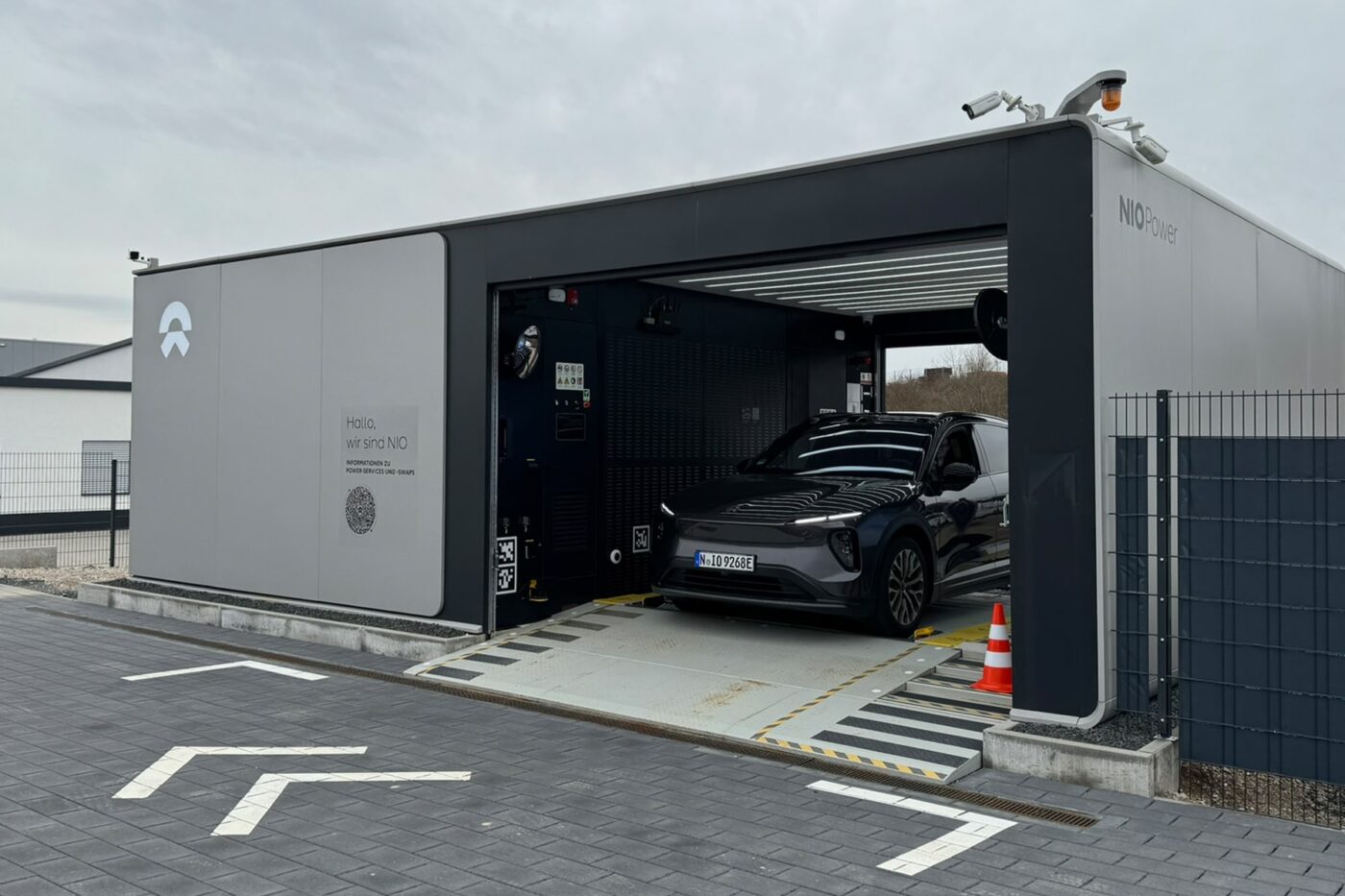
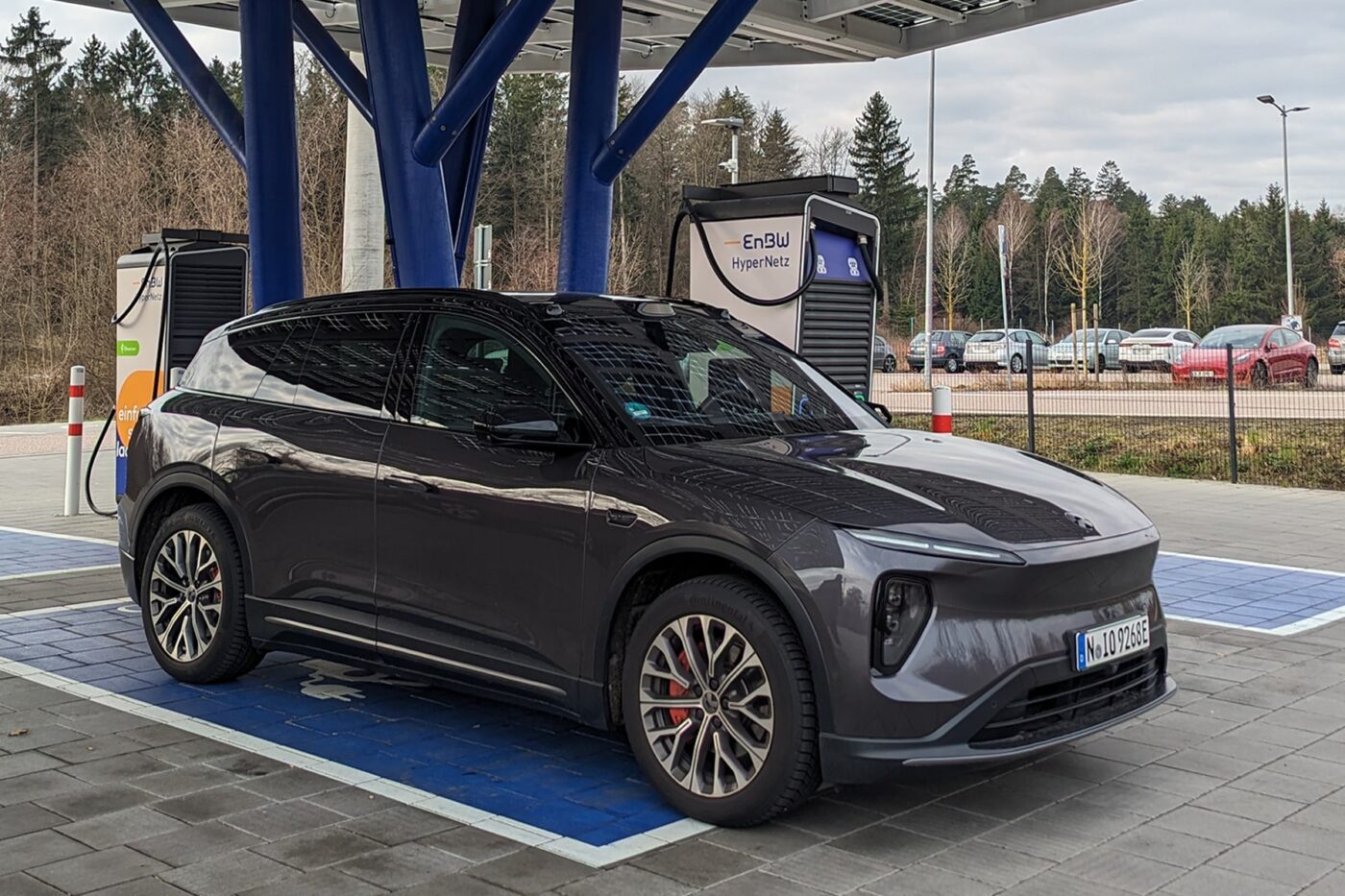
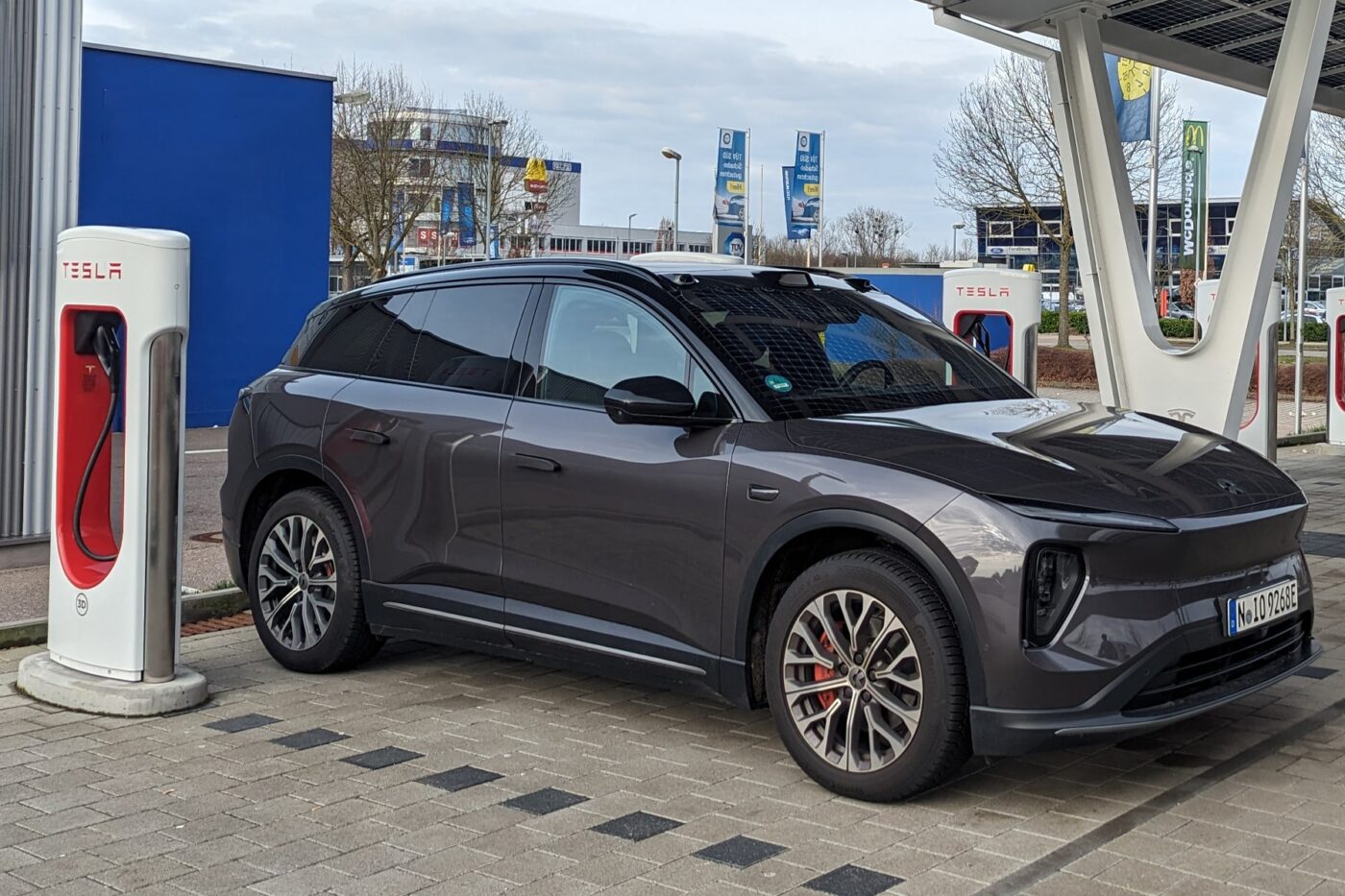
Assistants: Room for improvement
The mixed performance of the assistance systems was genuinely astonishing. The Nio Pilot steers the car quite well but is always unsure where exactly the centre of the lane is and, therefore, oscillates between the edges of the lane, and “emergency lane” is still a foreign concept. At least the system is now capable of automatic lane changes. The Nio Pilot is a helpful feature that relieves the driver. Still, if you compare its performance with the amount of information it collects via its armada of sensors according to the display, there is plenty of room for improvement when it comes to translating the collected data into a smooth driving style.
Conclusion: Probably the best price-performance ratio in the premium segment
Better build quality, more sophisticated assistants, higher charging performance – with the EL6, Nio has taken a good step forward in many disciplines.
Naturally, ”inexpensive” would be a misnomer. €80,500 for the fully equipped version is not a small amount. However, if you compare the EL6 with other high-performance premium SUVs, such as the BMW iX or the Mercedes EQE, the Nio EL6 is the clear winner in value for money. The two aforementioned German competitors already break the €100,000 barrier if you choose an motor capable to go from naught to sixty in 4 to 5 seconds – on par with the Nio. With a bit of equipment (remember: the basic trim EL6 already includes the head-up display, soft-close doors and matrix lighting), the price of a German vehicle quickly approaches €120,000. And against this background, the EL6, at “only” €80,500, almost seems like a bargain.
Sure, a Mercedes EQE still has subtleties such as rear-axle steering, the BMW iX is much better on the road, and both have better charging performance, but the Swabians and Bavarians also pay handsomely for this.
The EL6 is representative of all Nio models and shows what Chinese car manufacturers are currently best at: offering very good value for money. If they can eliminate the remaining weaknesses in one or two areas, the German competition may be in for a rude awakening sooner than later.
Translation by Nora Manthey




1 Comment